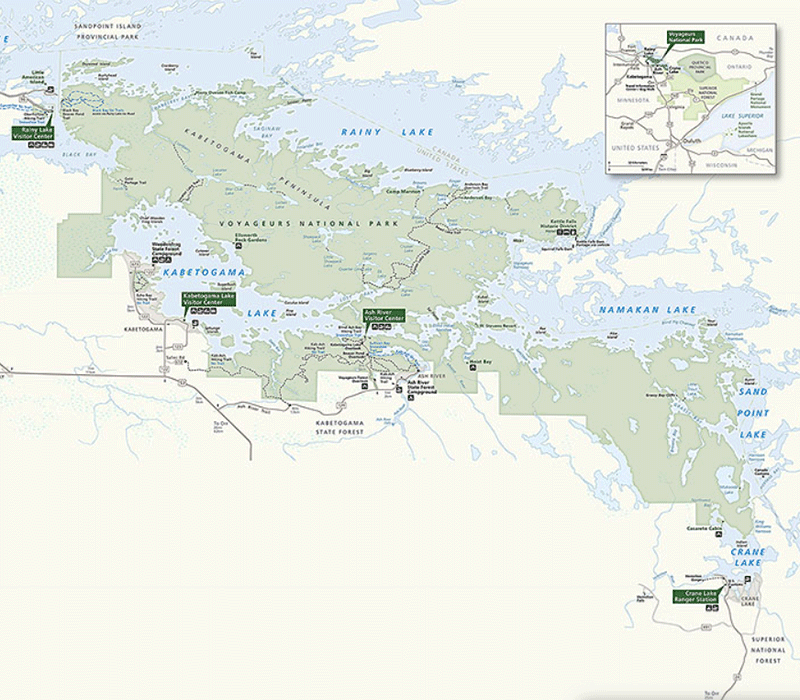USGS Investigators: Victoria Christensen
NPS Investigators: Ryan Maki
| 2016 | 2017 | 2018 |
|---|---|---|
| $98,570 | $99,250 | $102,180 |
The goal of this research was to better understand the drivers of algal bloom toxicity in the large lakes of Voyageurs National Park so that resource managers can better predict, manage, and mitigate the occurrence of harmful algal blooms.
A total of 126 environmental samples were collected at three recreational areas where blooms frequently occur. Those samples were analyzed for field parameters, nutrients, cyanotoxins, phytoplankton abundance and community structure, and cyanobacteria by molecular methods.
As recommended by the World Health Organization, this research provided further data on Kabetogama Lake, where blooms have contained the toxin microcystin at levels exceeding the high-risk category for recreational exposure. A series of publications presented findings and documented how simple, routinely-measured chemical parameters were used as a screening tool for prediction and indication of the need for further testing.
A Cyanotoxin Mixture Model: Relating Environmental Variables and Toxin Co-Occurrence to Human Exposure Risk
Data and model archive for multiple linear regression models for prediction of weighted cyanotoxin mixture concentrations and microcystin concentrations at three recurring bloom sites in Kabetogama Lake in Minnesota
Phytoplankton enumeration and identification from recurring algal bloom locations in Kabetogama Lake, northern Minnesota, 2016-2017
Phytoplankton community and temporal variation in relation to algal bloom toxicity, Sullivan Bay, Kabetogama Lake, MN, USA
